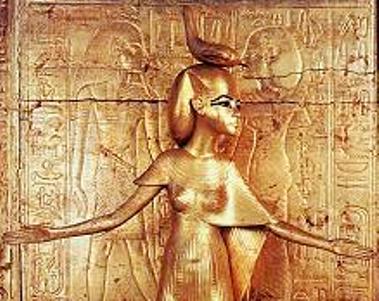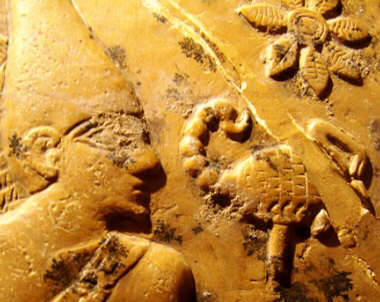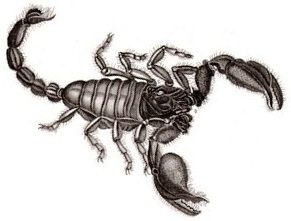
| Selket, goddess of Egypt | 
|
|
Ancient Egyptian Gods and Goddesses for kids - Selket The Mythology & History of ancient Egypt surrounding the Egyptian scorpion goddess, Selket |
|
Selket, goddess of Egypt
Discover the legends and myths and religious beliefs surrounding Selket, the Egyptian scorpion goddess of magic, protection and healing. Selket was depicted in human form with a scorpion-shaped headdress, or with a scorpion body and a human head. Selket was also a funerary goddess and guardian of Qebehsenuef, the son of Horus responsible for the canopic jar containing the intestines. In ancient Egypt many people that were bitten by poisonous snakes, reptiles, animals and insects, especially scorpions, died from the poison. The canopic jar containing the intestines was the one associated with poisons. Additional, interesting facts and information about ancient Egypt, and its mysterious gods, is available via: |
|
Who was Selket?
Selket was the Egyptian scorpion goddess of magic, protection and healing. Selket was also the powerful Protector goddess of Qebehsenuef, the canopic god guarding the intestines. Facts about Selket
The following facts and profile provides a fast overview of Selket:
Selket Profile & Fact File | | Egyptian Name: | Selket. Alternative Names: Serket, Serqet, Selcis
| | Role & Function: | The function of Selket is described as being the funerary goddess of magic, protection and healing
| | Status: | Important goddess worshipped in Upper and Lower Egypt with many doctor-priests
| | Symbols: | The scorpion, the Ankh, the Was Scepter
| | Cult Center: | Amarna, Western Nile Delta region
| | Titles: | "She who causes the throat to breathe", the "Lady of the beautiful house"
| | Name in Hieroglyphics: | Translation of Hieroglyphics for Selket: The horizontal line represents a door fastening, pronounced as letter "z". The symbol for "mouth" pronounced as letter "r". The semicircle signifies female, pronounced as a "t" and the symbol for a goddess
| 
|
|
|
|
Selket - Protective goddess of Canopic Jars
Selket was the Egyptian scorpion goddess of magic, protection and healing. During the process of mummification the liver, lungs, stomach and intestines were placed in special containers called Canopic jars. The goddess Selket had the important role as protector of Qebehsenuef, one of the Sons of Horus whose duty was to guard the intestines of the mummy. The ancient Egyptians associated the intestines with poisons. Selket the scorpion goddess was therefore the guardian of Qebehsenuef. Selket - Tomb of Tutankhamun
The following picture is of a gilded statue of Selket, with her protective arms stretching around the chest that contained the canopic jars of Tutankhamun. Her protective powers over Qebehsenuf are repeated through a relief representation on the corner of the canopic chest of Tutankhamun. As a protector of the dead, Selket is also represented on one of the four corners of the stone sarcophagus of King Tutankhamun. 
The Role of Selket
The role and duties of Selket were: - Goddess of healing against poisons and venomous stings
- A goddess of protection, especially connected to childbirth
- Patron of medical priests, doctors and physicians dealing with stings
- Goddess of Protection
- Patron of Pharaohs
- Funerary goddess and guardian of Qebehsenuef, the son of Horus responsible for the canopic jar containing the intestines
- Protector of the 'Scorpion kings' of early Egypt

Scorpion Macehead - King Scorpion (or Selk) an early ruler of Upper Egypt |
|
Selket- Interesting research information and Facts about the Egyptian scorpion goddess Selket
- Selket, the Egyptian scorpion goddess of magic, protection and healing
- Facts and information about the gods and deities of of classical Egypt for schools, research and kids
- Selket, the Egyptian scorpion goddess
|
| | |
|
Selket and the Scorpion
The famous symbol of Selket was the scorpion, an insect that was numerous in the desert regions of ancient Egypt. The scorpion symbolized chaos and were believed to be forms taken by the restless dead. Scorpion amulets depicting Selket were used as protection against scorpion stings. Magic spells invoking the protection of Selket were placed on the gateways to temples and in the houses of the ancient Egyptians. Scorpions have four pairs of legs, two large claws and a tail ending with a pair of small stingers that connect to a gland in which the venom (poison) is stored. The venom of scorpions is neurotoxic meaning it has a destructive or poisonous effect on nerve tissue. Scorpion stings release a poison which interferes with the nervous system and can cause paralysis and difficulties with breathing, usually resulting in death by asphyxiation (suffocation). The title of a “Follower of Serket” was given to her priest physicians. The doctor priests had medical prescriptions and magical spells to treat the stings and they also applied 'treatment by the knife'. Scorpion amulets were placed around the necks of people who had been stung and magic spells were incanted invoking the help of Selket. Another Egyptian scorpion-goddess called Hedetet resembled Selket and was depicted with the head of a scorpion and sometimes pictured nursing a baby 
|
|
|
|